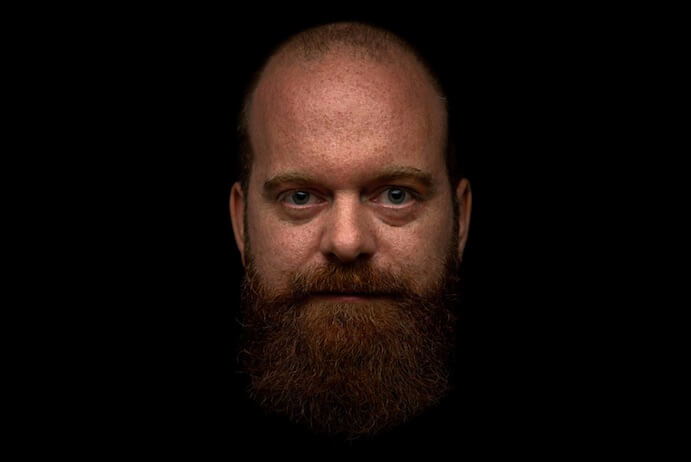Technological advances in artificial intelligence, algorithms, and automation have provided advancements to our society across all fields, though unforeseen consequences or nefarious usage can have an equally negative impact. In electronic compositions, these technologies can, intentionally or unintentionally, unearth new sonic ideas that open our ears and expand our imaginations. On Flash Crash + Remixes (out May 31, 2022 on Carrier Records), composer Jascha Narveson and cellist Ashley Bathgate shine a light on this complex relationship by utilizing raw stock market data from the high-frequency trading bots at the root of the 2010 five-minute crash known as the “Flash Crash.”
The album opens with Narveson’s titular Flash Crash for cello and electronics, written for Bathgate. From the onset, spastic clouds of angular pitch clusters immediately feel unnatural as the computer data’s influence becomes apparent. A more subdued and lyrical cello line quickly emerges from the first spurts of the drum machine, but the slow trickle of accumulating electronic layers sets up an aggressive and noisy confrontation between the cello and computer. Bathgate’s domination of the cello infuses the rawness of being human into the jagged outbursts of electronic rhythms and patterns. Narveson’s use of trading-bot data is incorporated skillfully into the composition’s narrative and cleverly highlights the entangled co-dependence between humanity and technology.

The remainder of the album sees the original recording remixed by fellow composers Matthew D. Gantt, Lorna Dune, Lainie Fefferman, Angélica Negrón, and Vladislav Delay. The first moments of Matthew D. Gantt’s remix feel confusing; the familiar sounds of bass clarinet, percussion, and mallets awkwardly meander as synthetic sounds enter in layers. It isn’t until the artifice of an expressionless vocal line enters that the remix spotlights a disconcerting perspective of human’s relationship with Artificial Intelligence. Gantt reproduces the acoustic instruments with such mastery that it’s hard to understand the early rigidness in its musicality, or lack thereof, but this dispassionate, deep fake-esque computer mimicry is necessary to properly juxtapose Gantt’s subtle and emotive control over the most nuanced electronic sounds.
The gently shifting cello harmonics from Narveson’s original recording mixed with additional ambient processing and synthesizers introduce Lorna Dune’s remix. The calming opening wafts into a quick transition; drum machines and synthesizers emerge into a more conventional beat, driving the work to its conclusion. In a shift from the energetic remix that preceded it, Lainie Fefferman’s Repairbot Q sent to Engine Room 3, working through the loneliness invokes incredible imagery with a haunting fragility and starkness. Fefferman’s ingenuity offers astonishing dimension as the heavily processed cello feels distant, but is simultaneously given the space to be the primary material. Sparse arrays of noises feel nearby and create a feeling of loneliness in this expanded sonic space, providing an innovative angle on the album’s larger conceptual narrative.
The atmospheric textures continue into Angélica Negrón’s remix, featuring her decisive creative voice. In Choque Súbito, steady and deep bass tones offer warmth, but Negrón’s meticulous sculpting of capricious pulsations ricocheting through the filtered ether captivates throughout the work.

After the more ambient works, the concluding remix by Vladislav Delay enters with a shock. The gritty manipulations to the original track are intensely unapologetic, forcing a reckoning between human and computer. Delay juxtaposes various genres from metal to free jazz and even pure noise to construct an inventive and gripping composition. The unrelenting intensity of the work is immersive, at times invoking the feeling of drowning while unable to recognize which way is up. While that imagery may sound horrifying, the track demands a committed listening to fully reflect on our relationship with technology.
Flash Crash is imaginative in its conception — the unusual idea of using Narveson’s title track as the impetus for composers to create unique and distinct remixes results in a compelling, refreshing listen. As each remix begins from the same original audio, the familiar process of identifying structures, pitches, or other musical elements in a new composition feels twisted, requiring a focused listening across each work for similarities and differences in form and aesthetic.
With Bathgate’s stellar performance as the only human performer on the recording, the overall album causes the listener to face the potential power of computers and their effects on society. But even while using the original data from the stock market Flash Crash, Narveson’s work is expressive and unmistakably human. The great irony at the heart of the album is that the very technology that caused the stock market Flash Crash — which was then used to create the original composition — is used again to alter a human process into new and unfamiliar territory in each remix. This ingenious over-arching storyline places our complex relationship with technology on full display — beautifully creative and horrifyingly dehumanizing — all in one breath.
I CARE IF YOU LISTEN is an editorially-independent program of the American Composers Forum, funded with generous donor and institutional support. Opinions expressed are solely those of the author and may not represent the views of ICIYL or ACF.
A gift to ACF helps support the work of ICIYL. For more on ACF, visit the “At ACF” section or composersforum.org.
























